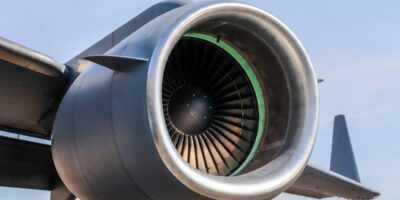The aviation industry stands on the brink of a technological revolution, with several emerging innovations poised to redefine air travel, enhance operational efficiency, and significantly reduce environmental impact. As we look forward to the next two decades, these technologies promise not only to transform how we fly but also to reshape the global aviation landscape.
One of the most anticipated advancements is the development of electric and hybrid-electric propulsion systems. These systems are designed to reduce dependency on traditional jet fuels, cutting down carbon emissions and noise pollution. Companies like Airbus, Boeing, and smaller startups such as Joby Aviation and Vertical Aerospace are heavily investing in electric aircraft, with prototypes already undergoing testing. The promise of electric planes includes not only environmental benefits but also potentially lower operational costs, opening up possibilities for cheaper air travel.
Another transformative technology is the use of hydrogen as a fuel source. Hydrogen offers a high energy density and, when used in fuel cells, produces only water as a byproduct, presenting an attractive zero-emissions alternative. Airbus’s ZEROe project, for instance, aims to develop hydrogen-powered aircraft by 2035. This initiative could revolutionize long-haul flights, significantly reducing the aviation sector’s carbon footprint.
Artificial intelligence (AI) and machine learning are also set to play pivotal roles in the future of aviation. AI can optimize flight paths in real-time, improving fuel efficiency and reducing delays. AI technologies are also being integrated into predictive maintenance systems, which help in anticipating mechanical issues before they occur, thus enhancing safety and minimizing downtime.
Autonomous or pilotless aircraft represent another frontier. Although the idea of unmanned commercial flights might seem distant, advancements in AI and machine learning are gradually paving the way for this reality. Autonomous drones are already being used for cargo delivery and surveillance, and the technology could eventually transition into passenger aviation, reshaping airline operations and potentially improving safety records by reducing human error.
Advancements in materials science offer additional pathways for innovation in aviation. The development of lighter, stronger materials such as carbon fiber composites allows for the construction of aircraft that are not only more fuel-efficient but also capable of withstanding greater stresses and operating under a wider range of conditions. Boeing’s 787 Dreamliner and Airbus’s A350 XWB are examples of aircraft utilizing these advanced materials to achieve significant reductions in fuel consumption.
Digital twinning technology, which creates virtual replicas of physical devices, is beginning to be used in aircraft manufacturing and maintenance. These digital models enable engineers to simulate and analyze aircraft performance under various conditions, substantially improving design and operational efficiency. This technology also plays a crucial role in maintenance, allowing for real-time monitoring and predictive maintenance, which can lead to substantial cost savings.
Finally, advancements in satellite technology and connectivity will continue to improve navigation and air traffic management systems. Enhanced connectivity not only means better on-board internet services for passengers but also more precise tracking and management of aircraft, which can lead to more optimized flight routes and schedules, reducing congestion and fuel consumption.
In conclusion, the future of aviation will likely be characterized by a shift towards sustainability, driven by electric and hydrogen fuel technologies, and increased efficiency and safety facilitated by AI, autonomous systems, and advanced materials. While some of these technologies may take years to fully integrate into commercial aviation, their potential impact on the industry and the environment makes them among the most significant advancements to watch in the coming years.




Subscribe for Updates
Get the latest articles delivered to your inbox.
We respect your privacy. Unsubscribe anytime.